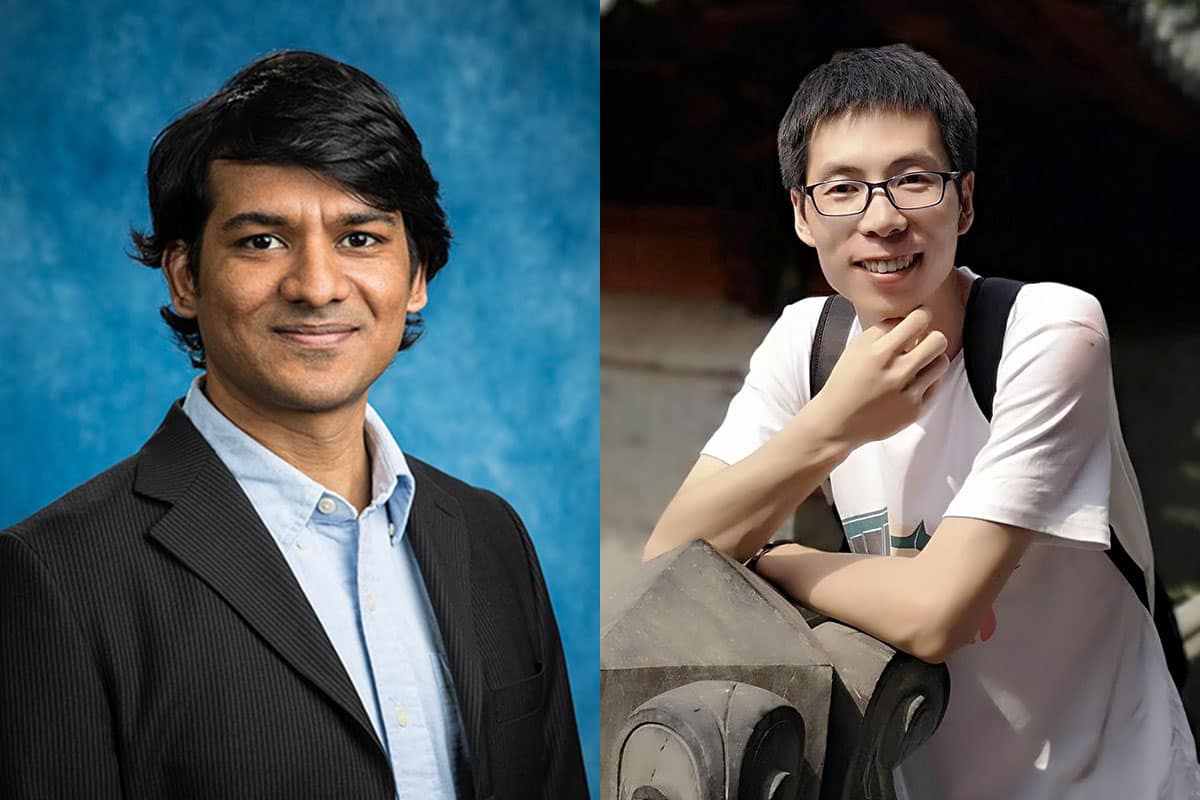Four New Research Grants to Help Solve Key Mysteries of Space

Major research funding, newly awarded to investigators at Embry-Riddle Aeronautical University, will support a space weather sensor that also might be capable of detecting orbital debris, a machine-learning approach to understanding fluctuations in the upper atmosphere, a study of solar wind dynamics and a rocket to help scientists unravel the mysteries of space.
“These new grants to Embry-Riddle researchers are yet another sign of the university’s growing reputation as a science and technology leader,” said Dr. Jeremy Ernst, vice president for research and doctoral programs. “In 2023, for just the second time in Embry-Riddle’s history, annual research expenditures exceeded the $30 million threshold thanks to investigators across the university who are working to push the boundaries of human knowledge and know-how.”
Dr. Aroh Barjatya, professor of Engineering Physics and director of Embry-Riddle’s Space and Atmospheric Instrumentation Laboratory (SAIL), has secured a $1.3 million NASA grant to develop and test a new probe for detecting even the smallest-scale plasma perturbations in low Earth orbit. These perturbations could also be indicators of orbital debris that is too small to detect using radar or telescope technology.
Specifically, he plans to develop an enhanced version of a scientific instrument called a “Langmuir probe,” which reveals key parameters of space by measuring the density of charged particles. Triggered by charged solar particles colliding with the Earth’s magnetic field, space weather can disrupt communication and navigation signals. Researchers want to better understand and perhaps someday predict those disruptions.
“My goal is to develop a Langmuir probe sensitive enough to not only do measurements of space weather but also to detect plasma signatures called ‘solitons,’ which are created by orbital debris,” Barjatya explained.
His latest NASA award will cover a three-year research project commencing April 15.
Predicting Events in Space
Another research grant was awarded to research scientist and principal investigator Dr. Wenjun Dong, who recently received more than $225,000 from Global Atmospheric Technologies and Sciences (GATS) and NASA. The subaward was the latest boost to a broader, multi-institution, million-dollar initiative led by Dong within Embry-Riddle’s Center for Space and Atmospheric Research, funded by the National Science Foundation and involving Utah State University.
The center’s latest project aims to quantify heat and momentum fluxes — caused by primary and secondary gravity waves — that ripple through the Earth’s atmospheric “cake layers,” from the stratosphere upward, into the mesosphere and thermosphere, encompassing the ionosphere. “These changes in the upper atmosphere can impact satellite orbits, navigation, communications, power systems and space weather,” explained Dong. “Machine learning suggests a new way to better understand and perhaps someday assist in predicting physical events in space.”
Current numerical models struggle to offer the fine-grain resolution needed to precisely describe the interconnection between primary and second gravity waves closer to the Earth’s surface, and associated heat and momentum fluxes in the upper atmosphere, Dong noted. Overcoming that limitation is a priority for NASA and others.
By leveraging machine learning, Dong hopes to provide approximate yet effective representations of the solutions to numerical models by solving particularly difficult mathematical problems (compressible Navier-Stokes equations) that describe the motion of a fluid in three dimensions.
The National Center for Atmospheric Research is also collaborating with Embry-Riddle on the project, Dong reported.
Other new Embry-Riddle research grants have included:
- A $493,527 NASA award for “Identifying the aspects of ambient solar wind formation that produce geoeffective mesoscale solar wind structures.” Dr. Samantha Wallace, research assistant professor, will lead this research project.
- A $400,264 subaward to Embry-Riddle, from Dartmouth College and NASA, to help develop a “GNEISS (Geophysical Non-Equilibrium Ionospheric System Science) Rocket.” The goal of the GNEISS rocket is to gather complex datasets in space. At Embry-Riddle, the research will be directed by Dr. Robert Clayton, a research scientist within the Space and Atmospheric Instrumentation Lab, which is part of the College of Arts and Sciences at the Daytona Beach, Florida, campus. In 2023, Clayton became the principal investigator on a $1.13 million NASA award aimed at developing an instrument, called a double Langmuir probe, that is small enough to fit on a CubeSat but powerful enough to assess the density and electron temperature of plasma.

 Ginger Pinholster
Ginger Pinholster